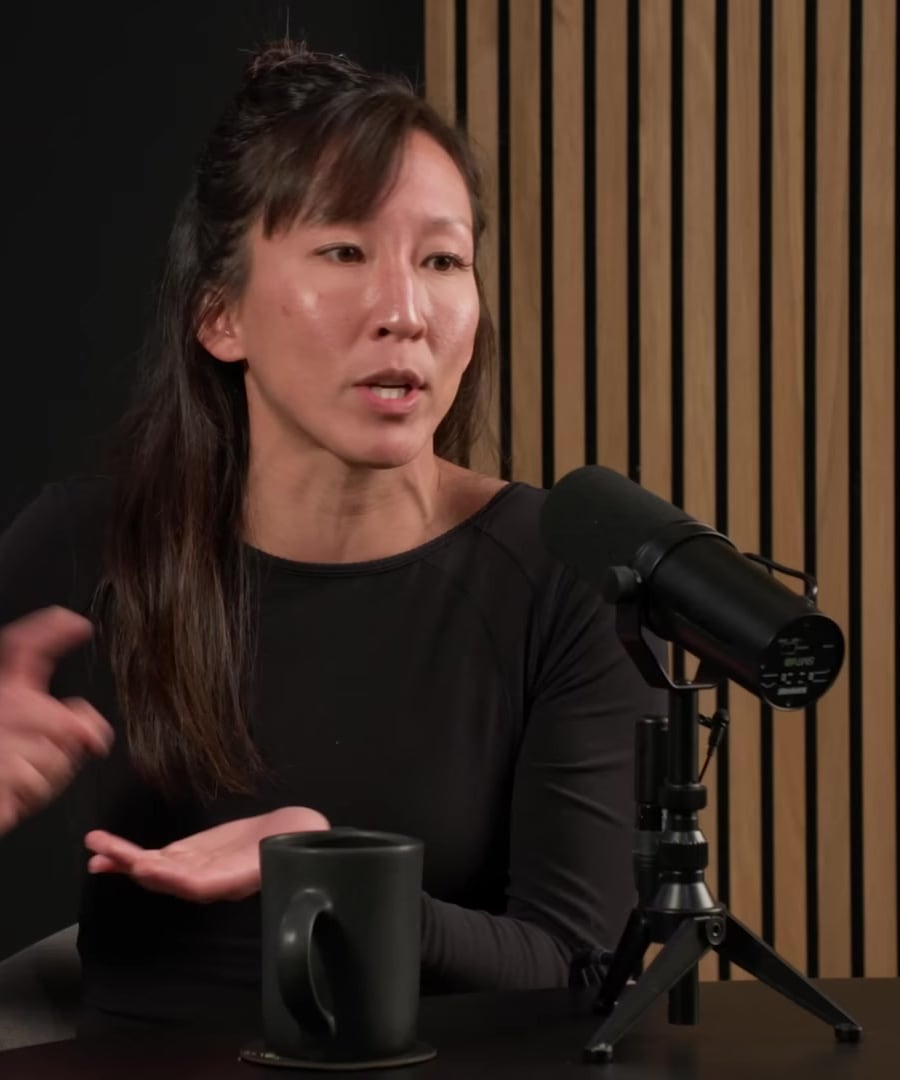Summarize the episode with Dr. Kay Tye
The episode with Dr. Kay Tye is titled "Dr. Kay Tye: The Biology of Social Interactions and Emotions." In this episode, topics related to the amygdala, such as valence processing and amygdala neuron function, are discussed. They cover how the amygdala contributes to our survival instincts, the impact of social media, and strategies for productivity. This episode also delves into social connection, the effects of maternal separation, and the identification of neurons associated with loneliness.
Further considerations of social homeostasis during the COVID-19 pandemic and the concept of a social set point are examined. The dynamics of social nourishment and the distinctions between an abundance vs. scarcity mindset in terms of social connections are explored. They also discuss the understanding of social rank in the brain, the influence of sibling relationships, and the dynamics of competition.
Additionally, the conversation touches upon the use of psychedelics for therapy, the efficiency of mentorship, and how to overcome impostor syndrome. Dr. Kay Tye and reflect on the evolving landscape of science, including rigid hierarchies in academia, the importance of research outreach, and the possibilities of neuroscience crowdsourcing. The episode encapsulates insights related to the biology of social interactions and the range of emotions that accompany them 1.
RELATED QUESTIONSDiscuss key topics from Dr. Kay Tye's episode in detail
Sources:
Here are the key topics from the episode with Dr. Kay Tye in more detail:
1. Social Set Point Flexibility: Dr. Tye discusses the notion of a social set point, which refers to our expectation of a certain level of social interaction. The pandemic altered this set point for many, making it dynamic and adjustable. The impact on health can be significant, with implications on lifespan and mood disorders 1.
2. Amygdala Beyond Fear: Dr. Tye explains the amygdala's broader role in emotional processing beyond just fear, highlighting its importance in assessing different emotional responses and its involvement in reinforcement behaviors that are both positive and negative 2.
3. Loneliness Neurons and Social Homeostasis: Dr. Tye shares her discovery of 'loneliness neurons,' which contribute to feelings of isolation when our social interactions are not fulfilling, and introduces the concept of social homeostasis—the brain's regulation of social interaction to balance between deficiencies and excesses 3.
4. Amygdala Neuron Function in Reward and Fear Stimuli: Further elaborating on amygdala research, Dr. Tye presents findings on how amygdala neurons can respond to both rewarding and threatening cues, challenging traditional views of brain function and neuroprocessing 4.
5. Emotional Valence Processing in the Amygdala: The episode delves into the amygdala's role in determining the positive or negative valence of experiences—basically, the 'goodness' or 'badness' of something—and how these perceptions guide our decisions and behaviors 5.
6. Adapting to New Social Norms Post-Isolation: Dr. Tye discusses how chronic social isolation can lead to changes in how one interacts with others upon re-entry into social groups, including territorial behavior, aggression, and avoidance—the results of shifts in social homeostasis. The transition to a new social norm can create surpluses or deficits in social interactions 6.
7. Impact of Social Media on Social Contact: In relation to the impact of social media, Dr. Tye predicts that social media interactions may not provide significant relief from loneliness due to their asynchronous nature, which often lacks the synchronous, shared experiences crucial for meaningful social contact 7.
8. The Nuances of Social Homeostasis: Quality and quantity are key to social interactions, with the former particularly influenced by the rank, history, and context of relationships. Social media's efficiency in providing mutual investment for connections is questioned, as the investment in social media posts for interaction is minimal compared to more personal exchanges 8.
RELATED QUESTIONS
Summarize the episode with Dr. Kay Tye
- RELATED QUESTIONS
Discuss key topics from Dr. Kay Tye's episode in detail
- RELATED QUESTIONS







